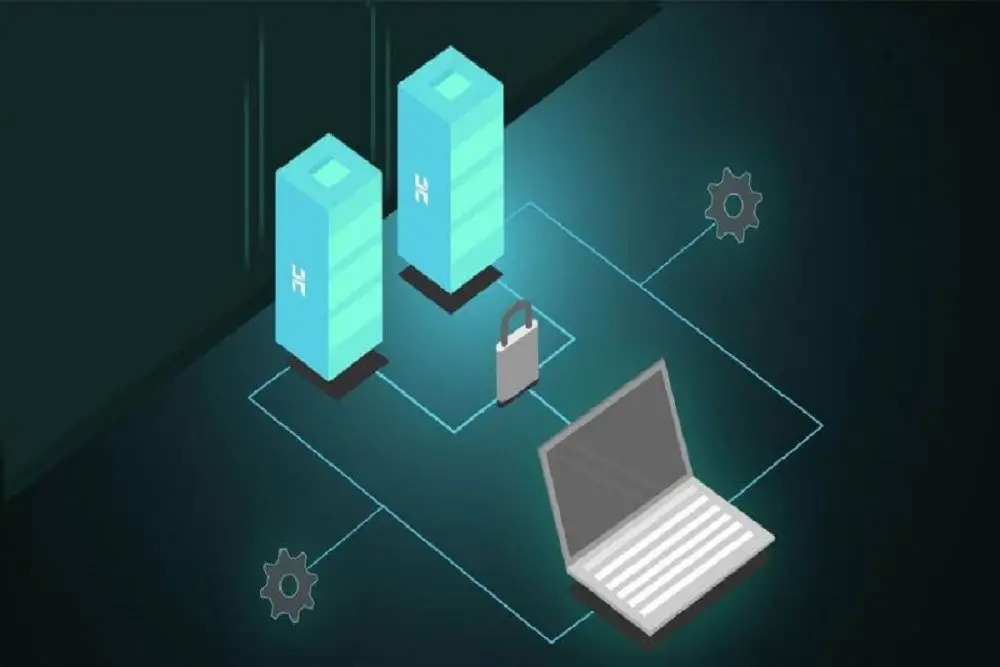SCADA, or Supervisory Control and Data Acquisition (learn more about SCADA), systems play a critical role in infrastructure and industrial applications by enabling remote monitoring and control of equipment and processes. They collect data from various sensors and devices, process it in real time, and use it to control operations.
The core components of a SCADA system include:
- Remote Terminal Units (RTU) or Programmable Logic Controllers (PLC), serve as a bridge between the equipment and the SCADA system by collecting data from sensors and transmitting control commands;
- A communication network that connects the RTUs or PLCs to the SCADA host computer and can be wired or wireless with communication protocols such as Modbus, Profibus, or Ethernet;
- A SCADA host computer, which operates the SCADA software and serves as the central point of control and data collection, often featuring a graphical user interface (GUI);
- A human-machine interface (HMI) software that runs on the host computer and provides the operator interface.
SCADA Systems Applications
SCADA systems have a wide range of applications in different industries, such as:
- Electric Power Generation, Transmission and Distribution: monitoring and control of power plants, transmission lines, substations and the flow of electricity in the grid;
- Water and Wastewater Treatment: Monitor and control water and wastewater treatment processes, including water flow, pump and valve operation, and water quality;
- Oil and gas: monitoring and control of oil and gas production, including wells, pipelines and storage tanks;
- Manufacturing: monitoring and control of manufacturing processes, including control of equipment and production lines.
Types of SCADA software
There are various types of SCADA software, including distributed control systems (DCS), programmable logic controller (PLC)-based SCADA, human-machine interface (HMI) SCADA, and cloud-based SCADA. Each type has its own characteristics, so it is crucial to understand the specific needs of an organization before choosing SCADA software.
Characteristics of SCADA systems
SCADA systems offer several services, such as:
- Remote Monitoring and Control – Allows operators to monitor and control equipment and processes from a remote location, making it ideal for remote or hazardous locations or central control of multiple processes;
- Real-time data collection and control – Provides faster response times and precise process control with real-time data collection and control;
- Increased Data Storage and Analysis – Offers greater data storage and analysis capabilities than traditional control systems, which is useful for performance analysis and trend identification.
However, when you are thinking of trusting a SCADA system, there are a few things to consider:
- Cybersecurity risks: SCADA systems are susceptible to cyberattacks that can compromise system security and allow unauthorized access;
- Complexity – SCADA systems can be complex to set up and maintain, requiring technical expertise from operators and maintenance personnel;
- Cost – SCADA systems can be expensive to purchase and maintain, which can be challenging for some organizations.
Choosing the right SCADA software
When selecting SCADA software, it is essential to consider the specific needs and requirements of the organization, such as the size and type of industrial process to be monitored, the level of remote access, the volume of data to be processed, and the budget. . Also, consider the level of support and training provided, the reputation of the software vendor, and other important factors such as scalability, compatibility with existing hardware and software systems, and the level of customization available.
In conclusion, SCADA systems are an essential tool in the industrial world, providing remote monitoring and control capabilities for a wide range of applications. It is important to understand the components of a SCADA system and the different types of SCADA software available, including DCS, PLC-based, HMI, and cloud-based options.
Subscribe to our latest newsletter
To read our exclusive content, sign up now. $5/month, $50/year
Categories: Technology
Source: vtt.edu.vn
